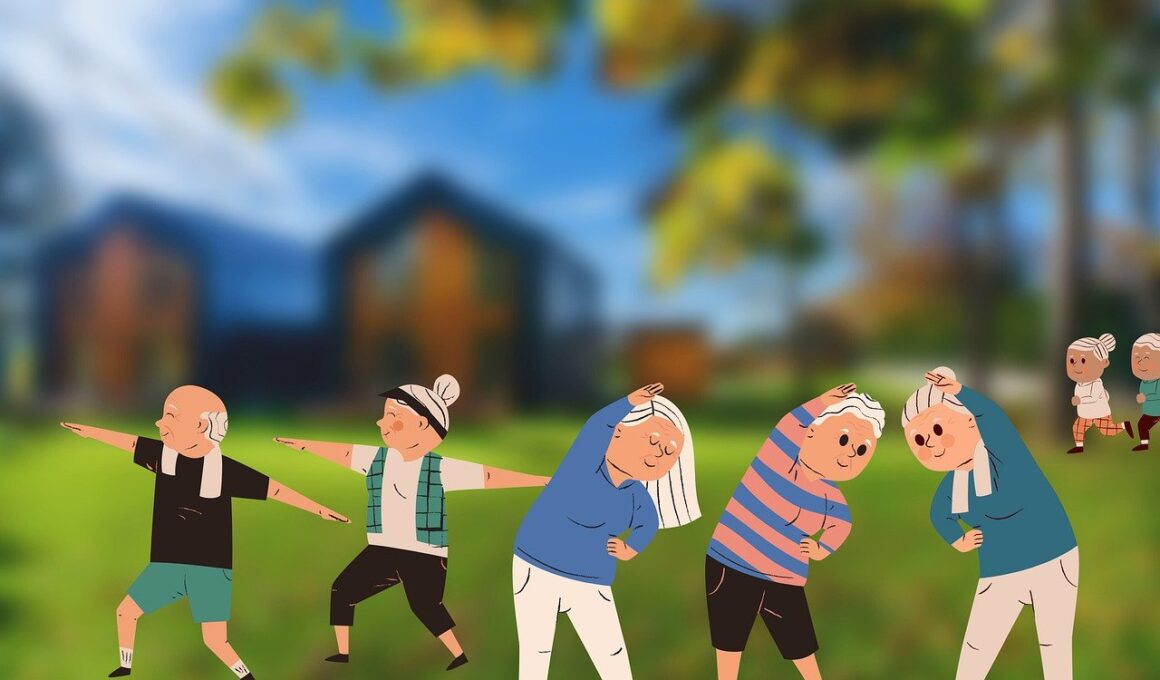Addressing Transportation Challenges for Seniors Getting to Fitness Facilities
Many seniors face significant transportation challenges when trying to access fitness facilities. Inaccessible public transportation systems and limited driving abilities can keep seniors from their goal of staying active. Entering an unfamiliar vehicle can be intimidating, especially when it comes to finding the right routes and times. Additionally, many seniors may lack confidence and experience with using rideshare services like Uber or Lyft. These barriers can prevent seniors from maintaining their physical fitness, dreadfully impacting their health. Gathering awareness can offer a lifeline to overcoming these barriers, with community initiatives playing a vital role. Collaborating with local authorities to improve transport options is one powerful approach. Changes could involve everything from improving accessibility of existing transit options to developing programs that connect seniors with volunteers willing to provide rides. Active older adults are essential for holistic community health as they lead by example. To encourage seniors to engage in regular exercise, coordinators should foster safe, reliable, and affordable transportation solutions. The community must come together to develop a framework that successfully addresses these specific transportation concerns the elderly face every day, ensuring accessibility to fitness facilities for all.
An array of solutions can help seniors overcome transportation barriers effectively. First, community engagement is crucial. Establishing partnerships with local organizations can provide valuable resources. Volunteers can be recruited and trained to assist seniors in getting to and from fitness facilities. These volunteer drivers can offer friendly companionship while ensuring seniors feel secure and safe during their travels. Another potential solution is the development of shuttle services specifically designed for seniors. This would provide a low-cost transportation option tailored to the specific needs of elderly individuals. Offering shuttle services can significantly help seniors overcome mobility issues. Moreover, mobile app technology can be harnessed to inform seniors about available transport options. Innovations in tech can enhance access and awareness for seniors who are tech-savvy. Alternatively, if new apps prove challenging, maintaining local flyers and informational sessions on transportation options would empower seniors about possibilities to explore. Local community centers can serve as hubs for information dissemination, bridging the gap between seniors and available fitness resources. Furthermore, fostering group workouts can encourage seniors to travel together, making the commuting process a shared experience while eliminating isolation.
Enhancing Physical Activity Through Community Initiatives
Community initiatives aimed at reducing transportation barriers can also contribute significantly to seniors’ overall physical activity levels. For instance, planning outdoor workout sessions within neighborhoods encourages seniors to participate in regular exercises without needing complex transportation. Establishing walking, yoga, or stretching groups offers a fantastic opportunity for seniors to stay active while fostering a sense of belonging within the community. Additionally, neighborhood fitness events tailored for seniors can provide an exciting atmosphere for getting involved while allowing them to meet new friends. Communal exercise strategies should also promote the involvement of family members, fostering household support systems. By working collectively towards a healthy lifestyle, seniors can benefit tremendously from shared motivation and accountability to stick to their fitness goals. Moreover, local government and health organizations can regularly offer fitness programs that incorporate elements like strength training, flexibility, and cardiovascular training within community spaces that are easily accessible. Organizing recurring workshops focusing on the benefits of fitness for the elderly ensures continued engagement and motivation to overcome transportation barriers. By focusing on inclusive approaches, we can drive collaborative efforts addressing these critical challenges while enhancing seniors’ quality of life.
Another strategy to enhance transportation for seniors involves promoting fitness facilities that are closer to their residences. Geographic proximity directly impacts the frequency and accessibility of exercise for older individuals. If local gyms and community centers are within walking distance or just a short distance from a senior’s home, the barriers linked to transportation diminish significantly. Residents can explore forming ‘Walking Buddies’ clubs, where seniors can pair up to safely walk to these facilities, encouraging social interaction and active living symbiotically. This creates a nurturing environment for seniors, where they are more likely to stay motivated. Moreover, making fitness programs available directly at residential senior housing complexes also encourages regular attendance among seniors with mobility challenges. Coordinators can establish ongoing classes, workshops, and fitness assessments at these locations, fostering wellness within the comfort of their homes. Also, collaborations with local health care providers to facilitate routine health check-ups can purposefully motivate seniors to engage with fitness programs. Health professionals often support seniors in identifying exercise as essential for maintaining health. By streamlining fitness offerings with their surroundings, fulfilling the needs of seniors becomes more achievable.
Utilizing Technology for Advocacy and Awareness
Utilizing technology to inform and advocate for solutions specific to seniors can also play a pivotal role in breaking down transportation barriers. By creating online platforms to share transportation resources, seniors can benefit from easier access to essential information. These platforms can include features like mapping local transport options and documenting fitness schedules at nearby facilities. Additionally, video tutorials can be provided, breaking down the process of using rideshare services, building confidence among the elderly population. Training seminars can be conducted at community centers focusing on teaching technology literacy to seniors. A solid grasp of technology can increase their independence and comfort in traveling to fitness destinations. Moreover, social media campaigns can raise awareness about local initiatives aimed at helping seniors overcome transport barriers, attracting volunteers eager to contribute. Streaming wellness workshops or exercise sessions through online platforms can also ensure seniors stay engaged, regardless of transportation access. With technology, innovative solutions become accessible, allowing seniors to remain physically active and virtually connected without the impediment of transportation issues. In this era of unprecedented connectivity, leveraging technology stands out as a strategic approach to create a supportive community for seniors.
Finally, advocating for permanent changes in transportation policies can lead to long-term benefits for seniors regarding fitness access. Local governments can work towards enhancing public transport, making sure these services are fully compliant with seniors’ needs. This includes prioritizing senior-friendly vehicles and routes, ensuring availability at peak fitness hours, and establishing safe and convenient drop-off points near fitness facilities. Additionally, implementing a feedback system is crucial; seniors need to voice their suggestions effectively, influencing policy changes that directly impact their transportation accessibility. Working in collaboration with local fitness facilities can allow seniors to express their transportation difficulties, prompting tailored solutions. Moreover, leveraging political advocacy can engage various stakeholders focused on health and wellness. Local governments, fitness organizations, and community members all share the responsibility of ensuring that transportation challenges for seniors are addressed. These collective efforts can create a sustainable cycle of improvement. As active participation from concerned residents grows, communities can witness a significant increase in senior turnout at fitness programs, leading to healthier, happier lives. Improving accessibility also encourages sharing experiences that strengthen community bonds.
Conclusion: Building a Fitness-Conscious Community
In conclusion, addressing transportation barriers for seniors is a multifaceted challenge, requiring community-wide collaboration and commitment. As transportation options evolve, so too do opportunities for seniors to engage in physical activities enough to promote better health and overall well-being. Clearly defined initiatives, innovative transportation solutions, and technology integration can create a ripple effect. This enhances not only individual health but also fosters community spirit. Meanwhile, achieving a solid commitment to policy changes will help create long-term solutions, ensuring a consistent flow of support for seniors adapting to changing transportation dynamics. By facilitating connections and encouraging inclusivity, we pave the way for a fitness-conscious community, ensuring no senior is left behind due to transportation issues. Ultimately, when addressing transportation barriers, we must continue to consider the unique challenges of this precious demographic. We will all benefit from a healthier society when we prioritize access to fitness, whether through volunteer rides, community-based initiatives, or effective policy changes. As we work together to ensure fitness facilities remain accessible, we help nurture the quality of life for every senior citizen.
This is another paragraph with exactly 190 words…


